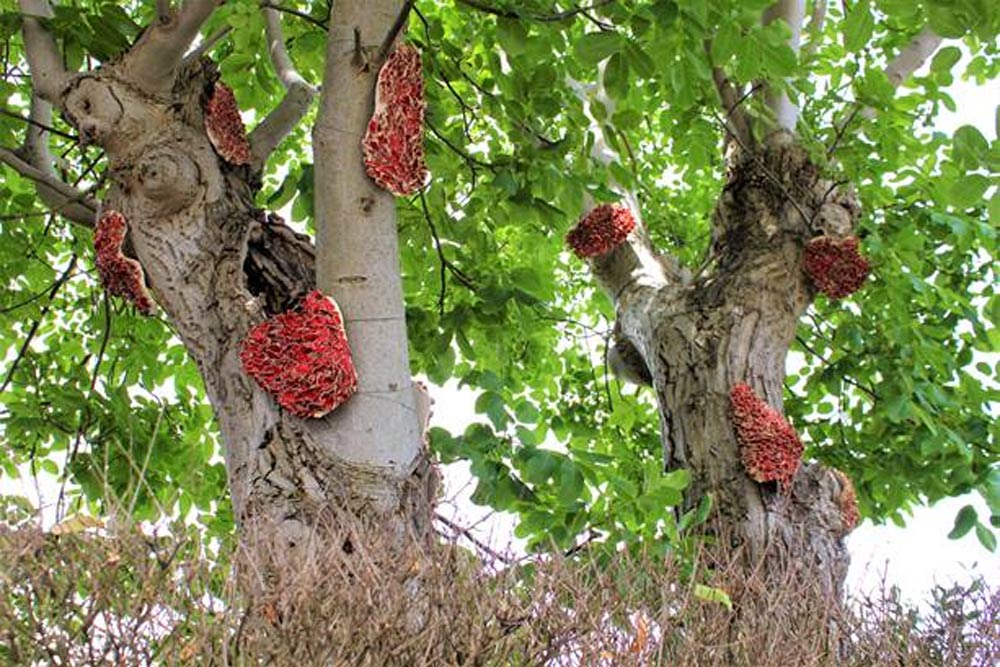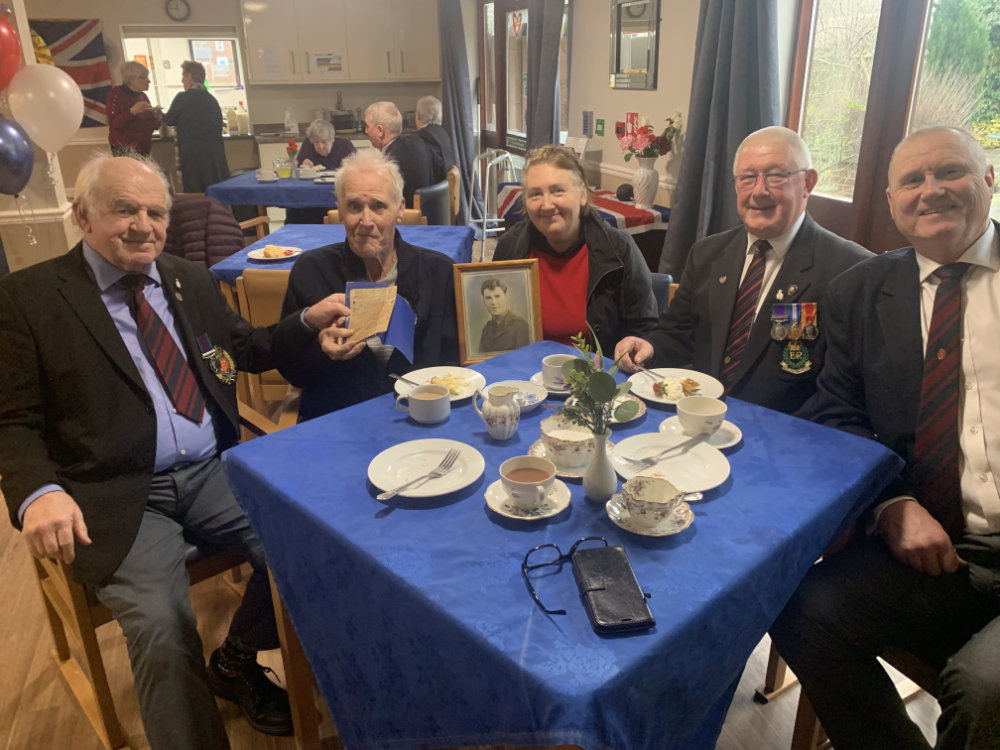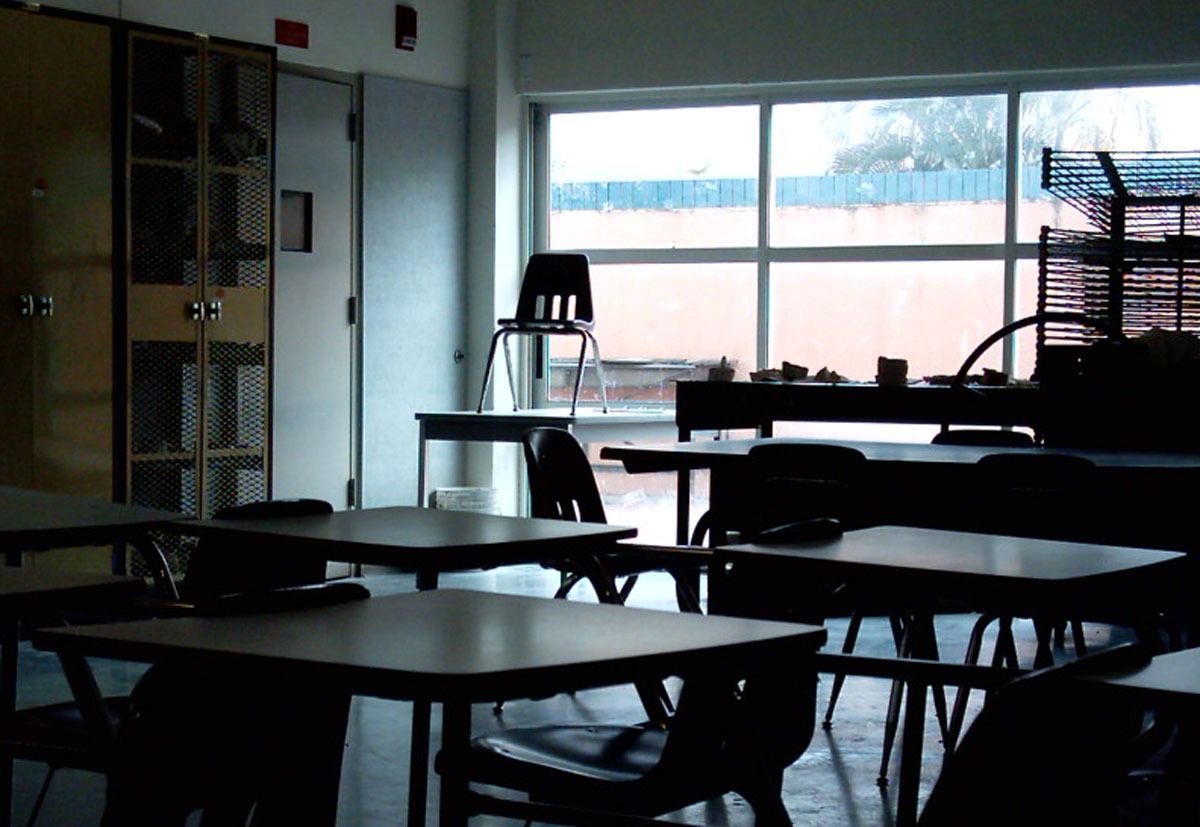Set against the beautiful backdrop of RHS Garden Harlow Carr in Harrogate,‘ Invasive Species’ is an exhibition by the Yorkshire Sculptors Group that offers visitors the chance to see work made for the garden dealing with ideas around nature, humanity and control.
Planning for the exhibition started last year but many of the artists found themselves changing their ideas and having to adapt their practice during lockdown. The uncertain times have led to work which often challenges the viewer to engage with ideas beyond the garden.
In ‘Feminist Escape Route’ artist Paula Chambers has used macrame to construct a rope ladder from washing line and rolling pins. In this time when lockdown has forced many women back into the home it hangs, just out of reach, from the branch of a tree. Social distancing is referenced by Lewis Robinson’s ’12 x 2 = 24’, an installation made by casting the interior of 12 pairs of old shoes and boots, laid out in a 2-metre grid formation.
Christine Halsey of the Yorkshire Sculptors Group said:
To maintain the delicate balance between order and disorder within a garden, invasive species, both animal and vegetable, must be kept in check. As a group of individual artists with diverse approaches to making sculpture, we have embraced the challenge of exhibiting at RHS Harlow Carr in our own personal ways, considering the ways in which our manmade interventions have the potential to enhance, or to disrupt, the balance of this beautiful semi-natural environment. In some ways, introducing sculptural objects into a naturalistic environment like Harlow Carr might also be intrusive or invasive. It’s really up to the viewer to decide!
Twenty five pieces by fifteen members of the Yorkshire Sculptors Group will be installed in the open air in the 58-acre garden from 1 September 2020 to 3 January 2021.
The outdoor exhibition forms a sculpture trail made up of the following works:
- ‘Bridge Across Troubled Waters’ by George Hainsworth: A wooden ‘bridge’ made from elm spanning the Streamside.
- ‘Squeezed Out’ by Sally Barker: A suspended cluster of small, glazed ceramic pieces, hanging in a tree, like a bunch of surreal, glistening, visceral fruit.
- ‘Pernicious’ by Sally Barker: A series of white, glazed ceramic pieces erupting from the ground and dripping from branches above, resembling living plants, yet each eerily bone white and ghostly.
- ‘Global Growth, Material World’ by Victoria Ferrand Scott: Strangely coloured, camouflaged spherical forms cluster like virus cells and spread between trees.
- ‘Paper Trail’ by Linda Thompson: White paper markers lead visitors on a journey of discovery.
- ‘Neither fish nor fowl’ by Garry Barker: A series of ceramic creatures representing the need to accommodate difference and celebrate the contributions of what we sometimes call invasive species.
- ‘Plastic Propagation’ by Victoria Ferrand Scott: Found plastic components, waste associated with water and gardening, hang like strange seed pods from red metal pyramids or swing like pendulums marking time.
- ‘Bulbed Blend’ by Melanie Wilks: A three-dimensional sandstone carving inspired by closed oriental lily flowers.
- ‘Weft and Warp’ by Melanie Wilks: Copper invades and seemingly weaves itself in and out of a sandstone host in this sculpture exploring the question of parasitic behaviour versus beneficial coexistence.
- ‘Omphalos’ by Melanie Wilks: Carved in a rich red sandstone, this sculpture is about growth and separation; the form references the coil of an umbilical cord.
- ‘In the Between’ by Joanne Hall: A series of aluminium pieces presenting a distorted reflection of their surroundings, responding to the tendency of humanity as a species to adapt, twist and distort nature.
- ‘Artefact and Marble Slab’ by George Hainsworth: An oak and ash artefact with an incised slab of marble designed to be experienced visually and by being sat upon.
- ‘Media Intrusion’ by Vincent James: Video cassettes, appropriated from the cartoon Adventure Time, leave their animated world behind to invade the cultivated grounds of RHS Harlow Carr.
- ‘The United Sticks of America’ by Terence Hammill: As the punning title suggests, a map of the USA is invaded or impaled by 50 bright red sticks. A hybrid flower, a flag or a virus.
- ‘Willow Knot’ by Lucy Hainsworth: Created in willow wood to imply the natural knotting that takes place in the tree itself as it grows. A knot also reflects both bonding and struggle.
- ‘Plait’ by Lucy Hainsworth: A carved plait created from a plum tree and colour coded. Created after trying to unravel an eight strand plait at the Ropewalk in Barton-in-Humber.
- ‘Oakleaf’ by Linda Thompson: Created after a visit to New Zealand where a large leaf crashed to the ground in the bush. So different to the gentle fall of fluttering leaves in the English autumn.
- ‘Breakthrough’ by Victoria Ferrand Scott: Natural looking spears made from concrete break through the ground as though trying to grow towards the light.
- ‘Coal Spire’ by Nicholas Vaughan: A memorial to the miners’ strike of the eighties referencing a legendary column of coal. Created from clinker, coal, resin and steel.
- ‘Feminist Escape Route: Attempt No 3’ by Paula Chambers: A long ladder hanging from a tree created using a plastic washing line and wooden children’s rolling pins, and the ancient technique of yarn knotting.
- ‘A still – Volcano – Life’ by Liadin Cooke: A still-Volcano-Life is a sign engraved with text describing the formation and eruption of the volcano Paricutin, Mexico in 1943.
- ‘12 x 2 = 24’ by Lewis Robinson: A twelve piece installation reflecting on the sense of isolation and confinement during lockdown.
- ‘Chain Gang’ by Linda Thompson: A chain of invasive flowers celebrating the welcome emergence of all the flora and fauna during the stressful days of lockdown.
- ‘We Only Print in Blood Red’ by Sally Barker: A series of glazed ceramic pieces consisting of overlapping layers of hundreds of individual clay fingerprints. Referencing our disturbing, chaotic, and consuming relationship to the natural environment and trees in particular.
- ‘Reciprocal Encounter’ by Carole Griffiths: Domestic tools formed from plastic hang in balance, forked and split, disrupting the landscape to signify potential harm.







